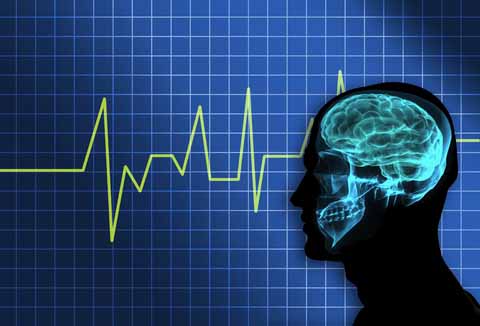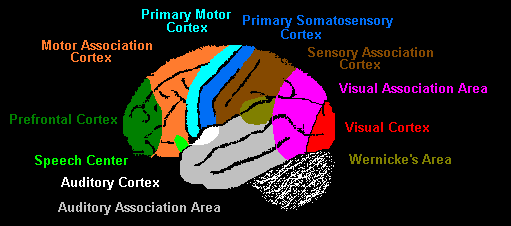While I have still been setting up patients and training them myself, this week has been dedicated to creating QEEG reports. I was taught how to run a patient's test file, containing the raw EEG without any analysis, through a database. I was exposed to only the Neurorep database, but the ADD Clinic uses a total of four databases for each patients data. Below are the various databases. I have presented them in the following format.
Name: Name of Database
Developer: Dr./Social worker who compiled the data.
Affiliated With: The research agency who funded/endorsed the collection of all the data.
Recording Condition: Whether the database is for eyes closed or eyes open training.
Discriminant Analyses: Some databases will contain discriminants for various mental disorders, meaning they will have both norms and different subtypes for that disorder. For example, the NYU Database has discriminants for ADHD, which means that the database can identify the many ways ADHD can manifest itself in the brains of different individuals (high Beta or low Delta/Theta, etc.) These databases are considered the most accurate.Other databases contain only norm (without mental disorder) files.
Number of Subjects: Number of people/files mapped and recorded in the database.
Age Range: Range of ages of people tested for that database. This is important because, ethically, a qEEG practitioner cannot run a client's file through a certain database if the client's age is not within the age range.
Other Notes: Any other important information.
The following databases are used by ADD Clinic to pinpoint areas of deficiency. I have also included examples of diagrams from each database's qEEG because each one displays results differently. For example, Neurorep may use the color green to display 0 standard deviations from the norm, and may only display up to 3 standard deviations. NX Link, on the other hand, may use black to display 0 standard deviations from the norm, and may display up to 1.5 standard deviations.
NX Link
Developer: John and Princhep
Affiliated With: New York University Medical School
Recording Condition: Eyes Closed
Discriminant Analyses: Head Injury, Depression, Delusions & Hallucinations, ADHD, Learning Disabilities, Memory, Substance & Alcohol Abuse
Number of Subjects: 782
Age Range: 6 yrs - 90 yrs
Other Information: This is perhaps the most extensive database for neurofeedback. The NYU Medical School tested 782 New Yorkers and mapped all the subtypes of the disorders listed above. Other countries (Japan, Korea, Nigeria, etc.) have ran their own citizens through the database and it has always been nearly 100% accurate at identifying mental disorders.
Neuroguide Lifespan Database
Developer: Dr. R. Thatcher
Affiliated With: Applied Neuroscience Inc.
Recording Condition: Eyes Closed & Eyes Open
Discriminant Analyses: Traumatic Brain Injury, Learning Disabilities
Number of Subjects: 625
Age Range: 2 months - 82 yrs
Neurorep
Developer: W. Hudspeth
Affiliated With: Brain Labs
Recording Condition: Eyes Closed & Eyes Open
Discriminant Analyses: Norms Only
Number of Subjects: 55 + 30 replicates
Age Range: 18 yrs - 59 yrs
Eureka LORETA
Developer: Sherlin and Congedo
Affiliated With: Nova Tech EEG
Recording Condition: Eyes Closed
Discriminant Analyses: Normalized Relative Current Source Density.
Number of Subjects: 84
Age Range: 18 yrs - 35 yrs
Other Information: This database is unlike any of the others; it pinpoints the brain's problem area on an x, y, and z axis, allowing a specific 3D area of the brain to be targeted. It produces 3 images, a horizontal slice of the brain, a vertical one, and an aerial view to show the problem in all dimensions.
Guide to Neurorep:
As I stated earlier, so far, I have only worked with the Neurorep program. So I will now detail the various aspects of the Neurorep database. The program itself is DOS based, with a very simple, keyboard-controlled system. When I run the files through the program, there are many "tests" (or interpretations) I have to perform. Keep in mind, each test/qEEG report creation is performed for both the Eyes Closed file and the Eyes Open one. The Neurorep database contains different norms for both EC and EO for all age brackets.
Analysis: A series of z-score database-created images that compares the brainwaves of the client to the normal brainwaves of others in their age group and gender.
Spectrum Report: A non-database (It uses only other references from the client's brain) graph that shows at which frequencies (9 Hz, 10 Hz, etc) occurs the most power/amplitude of the brainwaves. It shows an excess of power, which can help determine where the problem is.
Weighted Report: A non-database series of images that compares the power of brainwaves in a certain region of the brain to the powers of brainwaves in the surrounding regions. This will display any relative abnormalities.
NEI Image Creation: A series of non-database images that measures the connectivity between different regions of the brain. It measures if the brain is over connected (overly-excited connection between parts) or very disconnected (slow transfer of information), such as after a brain injury.
Each action creates a series of files/images, that are unreadable without Neurofeedback programs. So, using a program call L-Link, I convert each file and combine them into a single PDF file. The compilation of all completed PDF files from each database is the completed qEEG report.
Name: Name of Database
Developer: Dr./Social worker who compiled the data.
Affiliated With: The research agency who funded/endorsed the collection of all the data.
Recording Condition: Whether the database is for eyes closed or eyes open training.
Discriminant Analyses: Some databases will contain discriminants for various mental disorders, meaning they will have both norms and different subtypes for that disorder. For example, the NYU Database has discriminants for ADHD, which means that the database can identify the many ways ADHD can manifest itself in the brains of different individuals (high Beta or low Delta/Theta, etc.) These databases are considered the most accurate.Other databases contain only norm (without mental disorder) files.
Number of Subjects: Number of people/files mapped and recorded in the database.
Age Range: Range of ages of people tested for that database. This is important because, ethically, a qEEG practitioner cannot run a client's file through a certain database if the client's age is not within the age range.
Other Notes: Any other important information.
The following databases are used by ADD Clinic to pinpoint areas of deficiency. I have also included examples of diagrams from each database's qEEG because each one displays results differently. For example, Neurorep may use the color green to display 0 standard deviations from the norm, and may only display up to 3 standard deviations. NX Link, on the other hand, may use black to display 0 standard deviations from the norm, and may display up to 1.5 standard deviations.
NX Link
Developer: John and Princhep
Affiliated With: New York University Medical School
Recording Condition: Eyes Closed
Discriminant Analyses: Head Injury, Depression, Delusions & Hallucinations, ADHD, Learning Disabilities, Memory, Substance & Alcohol Abuse
Number of Subjects: 782
Age Range: 6 yrs - 90 yrs
Other Information: This is perhaps the most extensive database for neurofeedback. The NYU Medical School tested 782 New Yorkers and mapped all the subtypes of the disorders listed above. Other countries (Japan, Korea, Nigeria, etc.) have ran their own citizens through the database and it has always been nearly 100% accurate at identifying mental disorders.
Neuroguide Lifespan Database
Developer: Dr. R. Thatcher
Affiliated With: Applied Neuroscience Inc.
Recording Condition: Eyes Closed & Eyes Open
Discriminant Analyses: Traumatic Brain Injury, Learning Disabilities
Number of Subjects: 625
Age Range: 2 months - 82 yrs
Neurorep
Developer: W. Hudspeth
Affiliated With: Brain Labs
Recording Condition: Eyes Closed & Eyes Open
Discriminant Analyses: Norms Only
Number of Subjects: 55 + 30 replicates
Age Range: 18 yrs - 59 yrs
Eureka LORETA
Developer: Sherlin and Congedo
Affiliated With: Nova Tech EEG
Recording Condition: Eyes Closed
Discriminant Analyses: Normalized Relative Current Source Density.
Number of Subjects: 84
Age Range: 18 yrs - 35 yrs
Other Information: This database is unlike any of the others; it pinpoints the brain's problem area on an x, y, and z axis, allowing a specific 3D area of the brain to be targeted. It produces 3 images, a horizontal slice of the brain, a vertical one, and an aerial view to show the problem in all dimensions.
Guide to Neurorep:
As I stated earlier, so far, I have only worked with the Neurorep program. So I will now detail the various aspects of the Neurorep database. The program itself is DOS based, with a very simple, keyboard-controlled system. When I run the files through the program, there are many "tests" (or interpretations) I have to perform. Keep in mind, each test/qEEG report creation is performed for both the Eyes Closed file and the Eyes Open one. The Neurorep database contains different norms for both EC and EO for all age brackets.
Analysis: A series of z-score database-created images that compares the brainwaves of the client to the normal brainwaves of others in their age group and gender.
Spectrum Report: A non-database (It uses only other references from the client's brain) graph that shows at which frequencies (9 Hz, 10 Hz, etc) occurs the most power/amplitude of the brainwaves. It shows an excess of power, which can help determine where the problem is.
Weighted Report: A non-database series of images that compares the power of brainwaves in a certain region of the brain to the powers of brainwaves in the surrounding regions. This will display any relative abnormalities.
NEI Image Creation: A series of non-database images that measures the connectivity between different regions of the brain. It measures if the brain is over connected (overly-excited connection between parts) or very disconnected (slow transfer of information), such as after a brain injury.
Each action creates a series of files/images, that are unreadable without Neurofeedback programs. So, using a program call L-Link, I convert each file and combine them into a single PDF file. The compilation of all completed PDF files from each database is the completed qEEG report.























